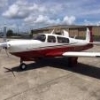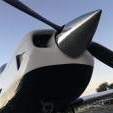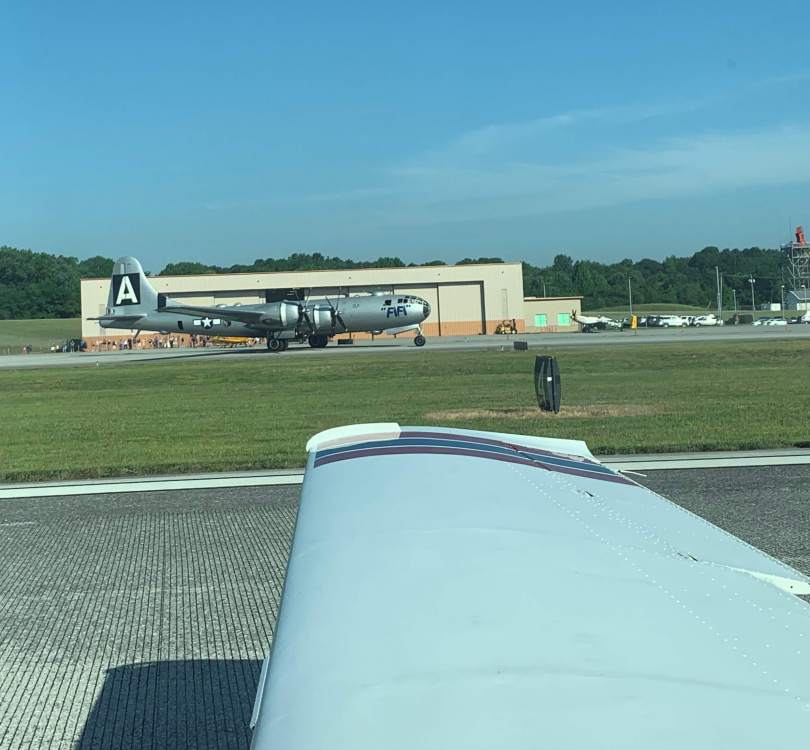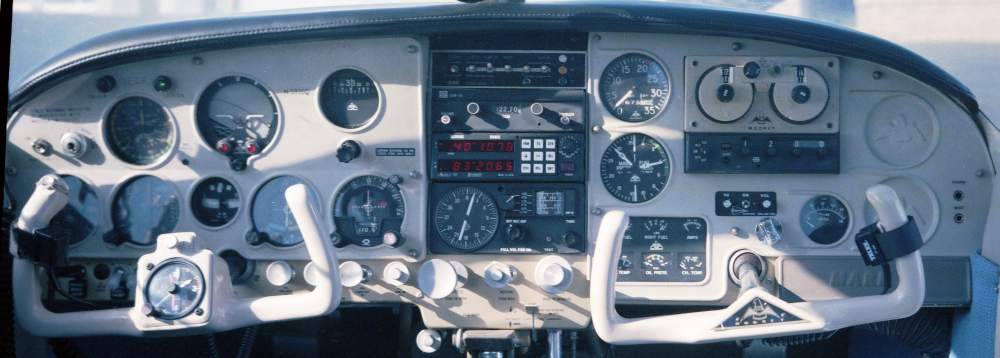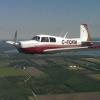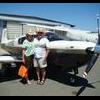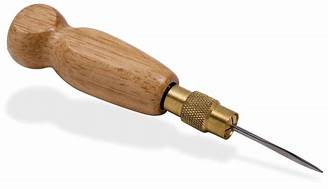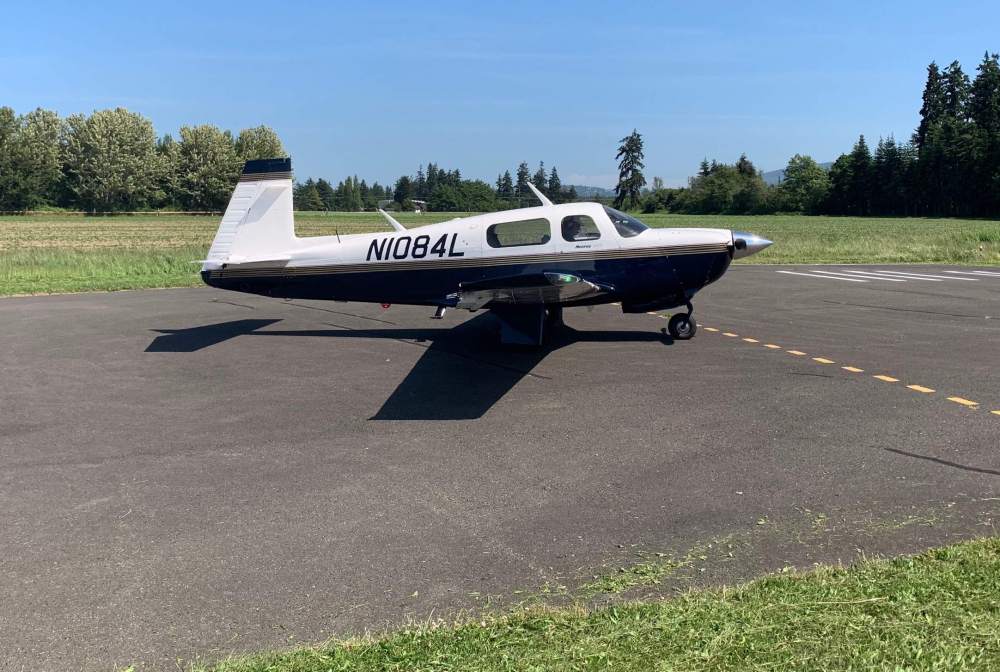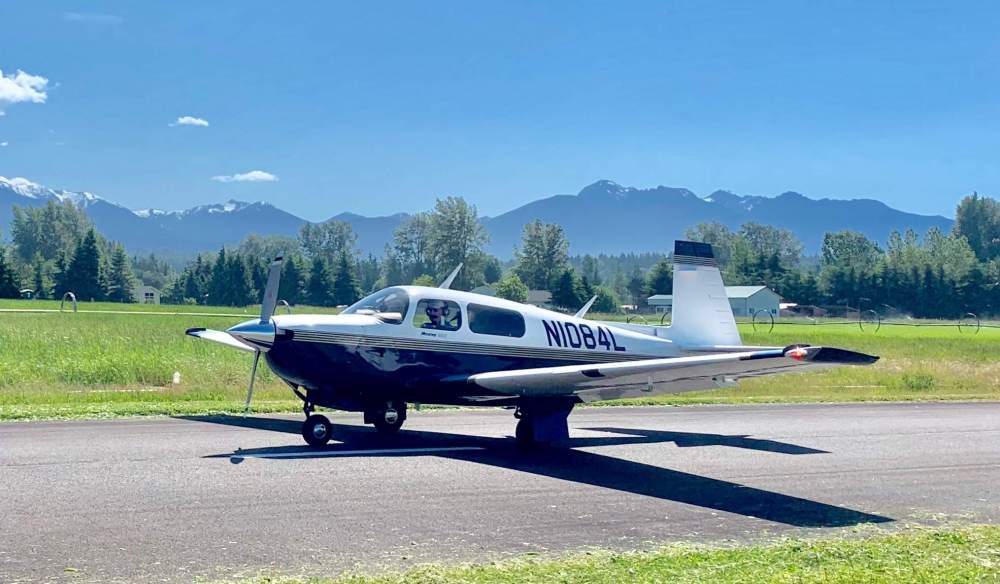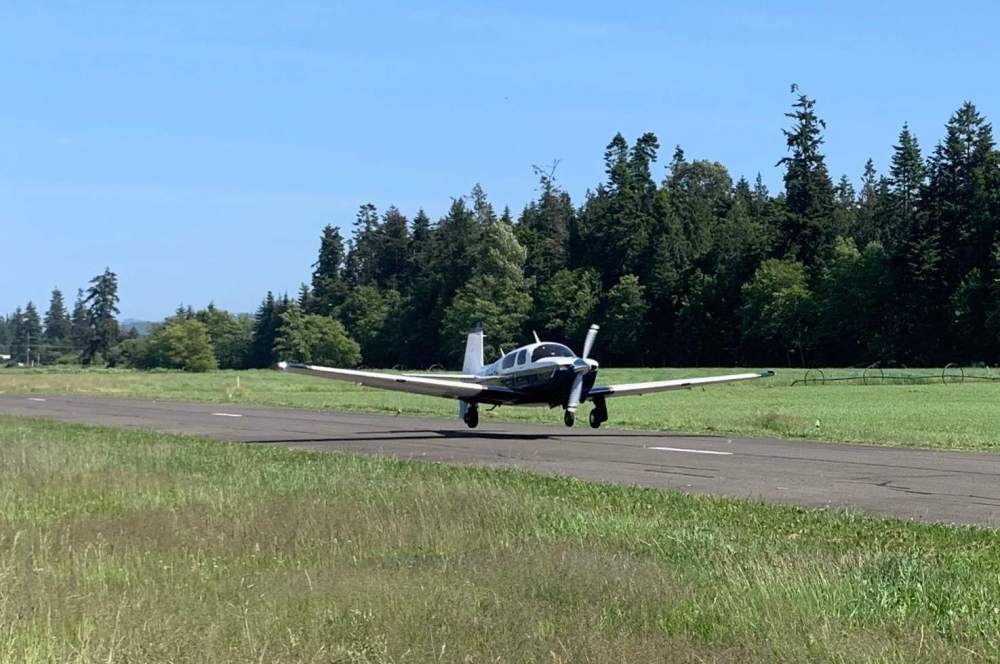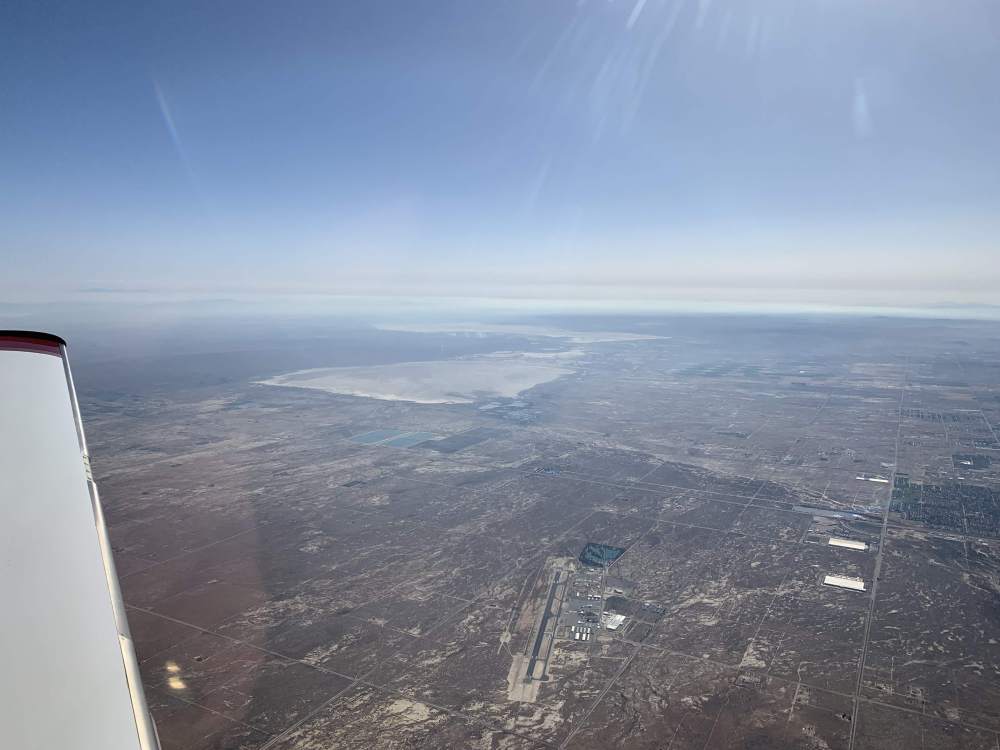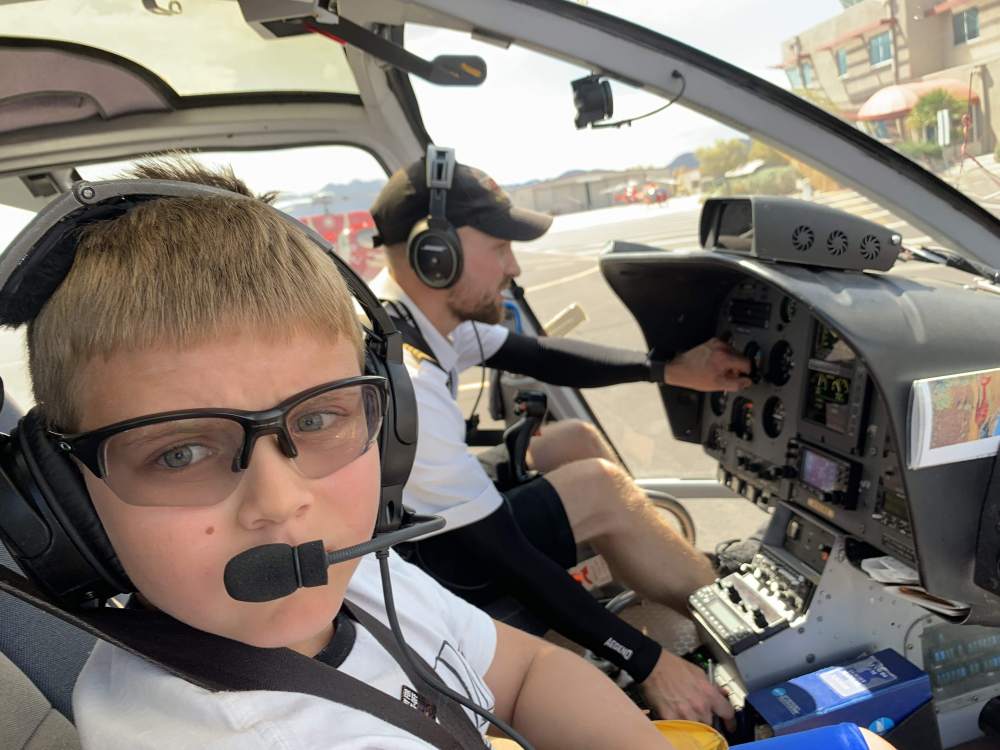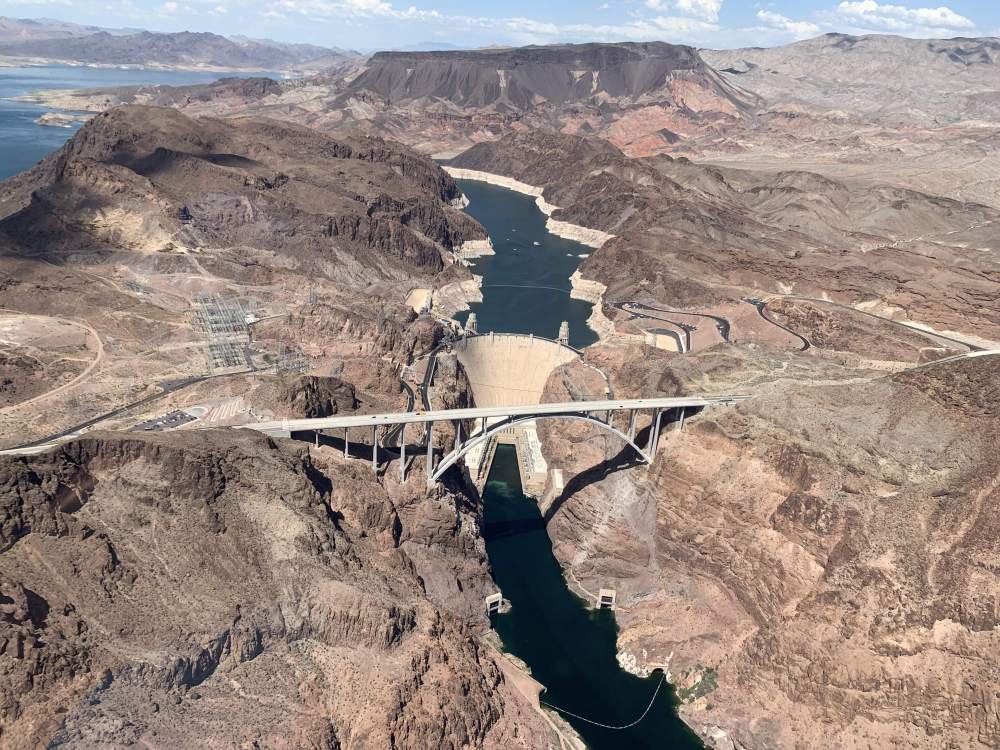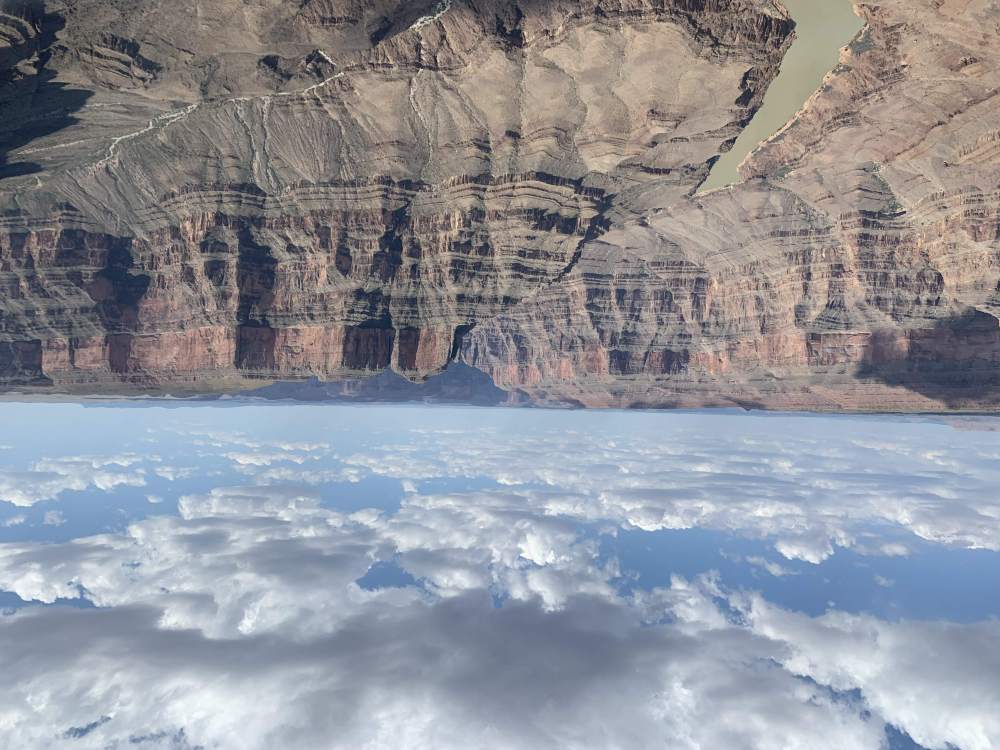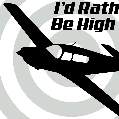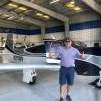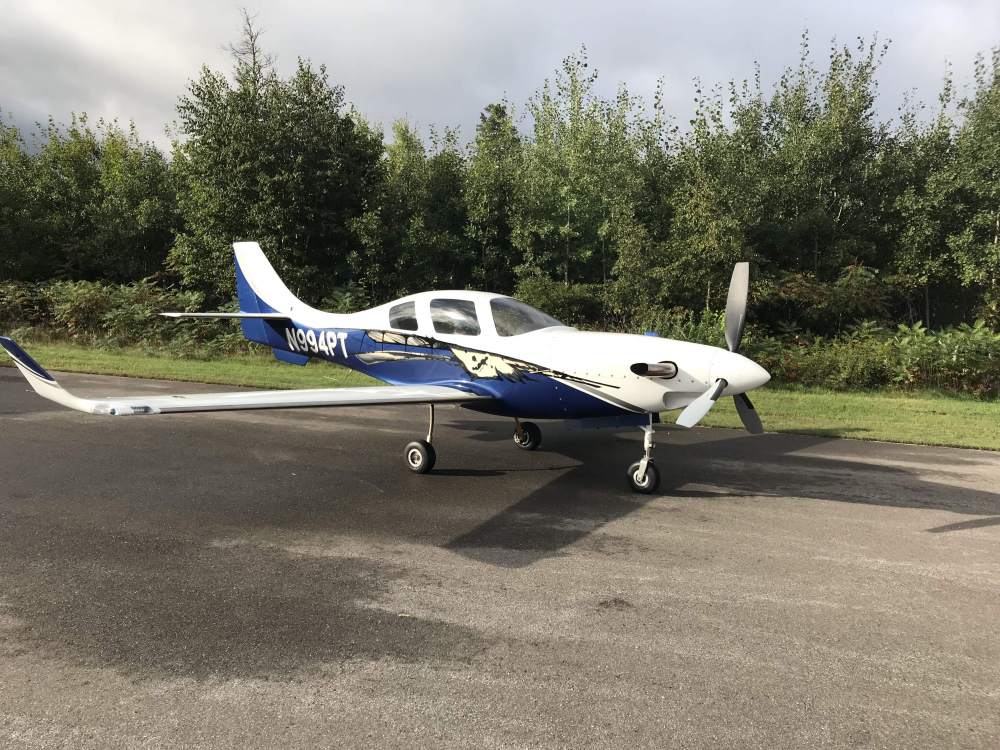Leaderboard
Popular Content
Showing content with the highest reputation on 06/04/2019 in all areas
-
So, as flight coordinator for our mercy flight organization based in the U.P. of Michigan, I field all flight request calls and dispatch the pilots for those flights. I’ve done this job on and off many times over the last 25 years, taking it back most recently April 1, 2018 after a 13 year break from another Mooney pilot that got burnt out. The negative with me dispatching, I hate telling patients we can’t find a pilot. I performed 30+ flights last year, and looking to be the highest flight count pilot this year as well. I got a call from an under 60 year old vet, back in March, with cancer. He was considering going to the U of M in Ann Arbor, but decided to continue treatment through the VA. Just over a week ago he was given 2-4 weeks to live (and I’m not sure ANY medical facility could have done him any better) and wanted to know if we would transport him back to his “home town” in KY where he had most of his family to support him in hospice. Although that’s out of our normal range, I said we would do it. We were scheduled to fly out Sunday but he was admitted for issues that morning. I had serious concerns he said was “transportable” when they called this morning he would be discharged and “ready to go”. I said I needed a doctors approval he could fly and got a call from the physician ( I was clearly impressed). So, he wanted to fly in my Lancair prop jet, but I would take him in our Bonanza (rear door boarding) if he couldn’t board the Lancair. We were looking at under one hour and forty minutes in the Lancair, a solid hour longer in the Bo. My return would be and hour and a half longer too His wife, an RN, was as my minimum requirement to do the flight, so she and their 3 year old son came along and she monitored and managed his health during the flight. He WAS ABLE to board the Lancair, so that’s what we took. We had some anxious moments during the first third of the flight, but everything relaxed after that and I covered a 12-14 hour drive (not doable for him) in one hour 39 minutes. I know I’ll never see him alive again, but the smile on his face when his family greeted him, just south of Lexington KY this afternoon when we landed, was priceless. THANKS FOR YOUR SERVICE JACK!!!! Tom Sorry, no pictures. Here’s a link to the flight. https://flightaware.com/live/flight/N994PT/history/20190603/1600Z/KIMT/KRGA22 points
-
I proposed to my Fiance in a glider. We will be getting married next month on a multi destination vacation in our new Mooney!8 points
-
Christmas 2008 I took my girlfriend up for a flight to look at the Christmas lights from the air. The end of the tour was over a friends 10 acres with almost 100 strands of lights laid out to spell out the question. We got married the next year and she's had a soft spot for our airplanes ever since.7 points
-
Boarding the Mooney can be a bit challenging, for sure. There has to be at least a modicum of arm and leg strength. It's easier to get them into the plane, where you can be there to stabilize them. Getting them out of the plane is more of a challenge, as it requires some strength to lift oneself out of the seat. If there is a line-person or some other helper present, that is best. However, I've also learned how to instruct passengers to just swing their legs out of the door and scoot along the front edge of the wing and just slide off there. It worked well for my 6'3" father when he could no longer get out of the seat, and it just worked last week for a burn patient who could not exert much strain on her legs or torso.3 points
-
I bought my first Mooney at age 34 financing it through a bank for 5 years. I averaged 250 hours per year for 11 years, 90% business. When at 68 and long retired I bought my 2nd Mooney. I used cash for the initial purchase and for all the improvements. I now fly ~75 hours a year, zero percent business. I think I did it the right way both times.3 points
-
I had planned to ask my wife to marry me during the Mooney Caravan, but as things worked out, she married me in the pulmonary unit of a Level 1 trauma center while I was on a ventilator. I love you Alice.3 points
-
Regarding the turn back vs. straight ahead preferences. One topic that hasn't been broached is the probability of outcomes. Based on experimentation, I know that I can turn back with even sloppy performance to at least the airport environment from 800' agl. Although it's possible to do it in 300', I doubt I'd be successful... maybe yes maybe no. I'll practice that. If I lose an engine out of Toronto Island Airport (CYTZ) other than in the summer, the probability of survival straight ahead is close to nil due to hypothermia. If it isn't summer, survival is nil. If it fails at less than 300-400 feet, probably still within the airport environment, I'd be able to do a 90-100 degree turn to get me on to the airport clearway somewhere. If it fails at >800', I should make it back. The grey area in between is the question. In the case of CYTZ in the cool months even the slim chance of a non-fatal turn back from a low altitude is still preferable to the alternative. I've found the discussion to be thought provoking. Before this, I'd just plan on which direction to turn on engine failure to be the most favorable off airport spot. I'll now plan before takeoff which direction to turn on engine failure (into the crosswind) and adjust my turn back yes/no critical altitude to be the most survivable based on the relative risks. As @Hank said above, the time to determine the critical altitude is before you take off. No need to think, just follow the plan.2 points
-
I really like Garmin equipment - I really think they are a level above their current competition but are defintily not the low price leader. When buying Garmin, you are paying for quality IMO. Garmin is similar to Apple - there stuff just works and they really put a lot of though into UX (user experience) and compatiblity with their own products. Yes, sometimes, they don't like to share interfaces with their competition or to the industry standard until necessary but their quality seems to be top-notch.2 points
-
Why thank you sir. Honestly though, I’m not posting for credit, but to show how helping others less fortunate can be rewarding in spite of the pain AND hoping to motivate others to do the same. I flew a 46 year old gal this last week I wanted to adopt last year, after 3-4 trips over to the Mayo Clinic last fall, on her final Med flight. Mayo confirmed she should be in hospice as well, with under a month to live. That’s my last two flights ......... flying pretty special people home for short term hospice. Although it really sucks (and actually “hurts”), I try not to lose prospective that THEIR LIVES STILL COUNT, even if they’ve been deemed terminal. Tom2 points
-
2 points
-
This has been a very informative topic and congrats to MS posters for staying on topic. What if is one of my favorite thought processes during all aspects of flight especially on departure as I think it's the most dangerous time we face. I can share my own experience. Back before we got our Mooney I bought a c150 to train in for my ppl. My wife and I wer taking off with full fuel and a couple bags lets just say max gross. About 300 ft we lost a cylinder and the engine was vibrating so bad that I was worried we were going to shake apart. There aren't too many good options for straight ahead from 28 at home so I started a left turn to get back to the field. I could only get about 14 or 15 hundred rpm so there was some available thrust but we were sinking at around 200fpm. I remember really pushing on the yoke as we banked at 30 degrees. As we all know one of the down sides of a Cessna is the wing hides your view of the runway when making pattern turns so my attention was devided between airspeed heading rate of descent and looking out the window as the trees were growing taller by the second. After about 270 degrees of turn went wings level about 100ft AGL and had the departure end of the runway right in front for an easy right turn to line it up. Rwy 28 is a right pattern and I have never done anything but a right crosswind as SOP but the wind was coming from the left as it usually does so my thinking was to turn into the wind for displacement while I had the greatest amount of altitude and energy. Then when I had to make my turn to line things up the tail wind helped me reach the runway with no trouble. Had I done it the other way I doubt I would have had enough of what I needed to make it back. I understand the points made about turning down wind first but if you think about it I would rather have a tail wind helping me get back than a head wind fighting me when I am closer to the ground. its clear that a lot of choices have to be made very very quickly and instinctively when things happen so close to the ground and I think we can all agree is no matter what always keep flying the airplane Great discussion every one2 points
-
2 points
-
The remote audio panel and remote transponder work well with the GTN750.1 point
-
Less likely, but it could also be a plugged fuel intake strainer in the right tank. The finger strainer attached to the fuel intake tube in many of our birds suffers from an excess of tank sealant, which partially blocks the screen. Add a little bit of debris such as flakes of sealant, corrosion, paint, etc. it isn't too hard to block the screen. The loss of pressure through the screen would show up as a reduction in fuel pressure.1 point
-
I had it installed about a year ago at Weber aircraft. I think I’m actuality it took 10 hrs to install because of being their first. I think they knocked 2 hrs or so off the bill since I was first. it is very comfortable, looks great and very comforting. e1 point
-
1 point
-
In today's sponsored post, I'll offer some practical guidance for choosing a good limit for your liability coverage. First thing's first, as I wrote last time, liability coverage forms the base of your aircraft insurance policy and has the valuable benefit of being your legal defense. But what limit should you choose for your policy? Liability coverage for Bodily Injury and Property Damage on an aircraft insurance policy is written on an Occurrence basis. There is on overlying limit, typically starting at $1,000,000 to cover exposure for bodily injury and property damage. Most aircraft owners then sublimit the passenger coverage within the previously mentioned limit. (Most choose to limit to $100,000 Each Passenger for bodily injury). For some, this limit is the only one available. This could be due to a pilot not having much flight experience or a perhaps the age of the pilot. But if higher passenger sublimits (or no sublimits at all) are available, you should consider going with the higher limits. Some quick terminology: The Combined Single Limit (CSL) describes the maximum liability exposure that insurance company has agreed to take on for bodily injury and property damage. If an aircraft is insured with a limit of $1MM CSL, the most an insurance company would have to pay for both bodily injury and property damage in total would be $1MM. Sublimit: Combined Single LImits can be sublimited on a per person or per passenger basis. "Smooth" limits describe liability coverage that does not have per person/passenger sublimits. Here's the practical advice: Look at the value of your assets As you look at the value of your assets, you should especially consider the value of your airplane. Consider if you fly with non-spouse passengers. If so, consider higher passenger bodily injury limits Example: You own a pristine 1999 Mooney Ovation worth and insured for $205,000. Your liability coverage is $1MM limited to $100K Each passenger for bodily injury. You and a friend are flying and a mechanical failure results in a crash and injuries to your passenger. Your airplane is a total loss. Your passenger doesn't sue, but their health insurance company does in order to recoup their losses. After all, they just paid a $190,000 medical bill for your friend's 3-day hospital visit. Your insurance company writes you the check for the loss of your plane - $205,000. Regardless of what assets you had before, you've now got $205,000 more in your bank account. Wouldn't it be nice to have a liability limit that would protect this cash? The health insurance company knows you have a lot of cash from the insurance proceeds and they figure you have more assets to go along with that. It's quite posssible your insurance company reaches a settlement for $100,000 and avoids court costs. But not in this case. Unfortunately, the health insurance company drags you to court claiming your negligence in maintaining your airplane and the court awards a judgement of the full cost of the medical bills - $190,000. Your insurance company defended you, but at the end of the day only has to pay $100,000. You've got a balance of $90,000 to pay. The money is there...in your bank account since the insurance company just wrote you a check for the plane. In light of an example such as this, consider passenger bodily injury limits of greater substance, and possibly in excess of the value of your aircraft. While it's nice to have a "Smooth" limit with no passenger sublimits, some pilots do not have the flight experience to obtain this. However, most certificated pilots can obtain a higher passenger sublimit of $200,000 for a small addtional premium (normally about $75-200 per year). To give an example of what differences in liability coverage cost, consider this recent quote I received for an experienced pilot in a $182,000 Mooney M20R and respective liability limits. Note the small $83 difference to double passenger bodily injury coverage from $100K to $200K. And only $369 in total additional premium to obtain a "Smooth" limit: $1952 Total Annual premium with liability limits at $1MM/$100K $2035 Total Annual premium with liability limits at $1MM/$200K $2321 Total Annual premium with liability limits at $1MM CSL ("Smooth") $2243 Total Annual premium with liability limits at $2MM/$200K $3933 Total Annual premium with liability limits at $2MM CSL ("Smooth") In the next article, I'll discuss Medical Payments coverage. Medical Payments Coverage is not liability coverage as no determination of negligence or legal action must be taken in order for the coverage payments to apply. Parker Woodruff Airspeed Insurance Agency LLC 214-295-50551 point
-
.the problem is not following the manufacturers procedures, not knowing how to properly use/hold a torque wrench and not truly knowing what you are doing. My guess the failure rate of replaced cylinders is very very low. I have met some really talented A&P and IA's but I've also met a few that I wouldn't let them change the oil in my lawnmower.1 point
-
Been thinking about busting open the old 36" RCA tube tv in the attic for the degausser. CFII was a little concerned with mine, but my check ride was cx last week due to wx and now im in annual this month. IA is gonna try the compensators first, but I'll be sure to show him this post. Sent from my SM-G930V using Tapatalk1 point
-
First Pryority Bank, Doug Smith. Mike Jacob's was the president and Mooney driver. They know what their doing and know vintage mooney's worth. Sent from my SM-G930V using Tapatalk1 point
-
1 point
-
Thank you for your service as well. I am scheduled to fly my 5th AngelFlight this year this Thursday but weather is not looking promising for the flight down to MD Anderson in Houston.1 point
-
Looks like it was flown with the gear down https://flightaware.com/live/flight/N711PP/history/20190523/1522Z/KTMB/KOPL/tracklog1 point
-
As Yetti said, just need a punch the correct size to push out the roll pin. It's an easy removal/install. The hardest part for me was that at some point in time one of the roll pins was replaced with a large cotter pin. It was tough to remove and of course had to find a new roll pin the correct size. I have been very happy with the new cams, and have not ended up in recline mode on accident yet.1 point
-
I hear ya regarding checkbook v. dreambook. I've owned 5936Q for 33 years, and for 32 of them I flew around with the original gauges -- never quite sure how much fuel I had, a CHT that worked only every fourth time, etc.! I didn't mind; it was still a Mooney! The attached photos show what the panel looked like in 1986 when I bought it, and what it looked like in 2006 (and looked like for years before the upgrade). If it's comm panel versus G5, get the G5! If you only get one G5, use it as a PFD -- it replaces the attitude indicator with a solid-state display that has 30 minutes of backup power even if you lose your electrical system. If you don't have an intercom: For years I had a comm panel that kinda sorta worked, and supplemented it with a simple Sigtronics intercom. Aside from the G5, the other thing I would upgrade is the landing light: find the cheapest Whelen LED landing light replacement you can, and install it. You can leave your landing light on all the time after that with almost no noticeable drain of amps, and it will last forever. You can also upgrade to LED position lights for about $20 a bulb if you can find the right deal. In December 2016 I flew down to Gulf Coast Avionics in Lakeland, Florida and had them upgrade to the GTX-345 and comm panel. They did a nice job. Matt Schloss is their sales rep and John Theobald is the avionics manager. Good guys. The 2018-2019 upgrades that resulted in the panel in the photo a couple of posts above were expensive (once-in-a-lifetime financial thing), but SkyVista's prices were very competitive and the A&P, Dave Holden, is also an AI and an airline pilot and a Mooney owner! Everyone at his shop there in Marysville is a pleasure to work with. Doesn't get any better than that.1 point
-
I am not sure the non-WAAS can be installed legally in an M20C. The WAAS version is OK though. Check first with an avionics shop. I did discuss this many years ago and that is what my memory tells me. Yves1 point
-
Resistance check is a quick way to detect dielectric short...ie if using a simple continuity checker...continuity center wire to case =bad cap1 point
-
Also, if your plane sits outside you should really get a cover for it. I keep mine in a hangar but when I travel the cover goes on anytime the plane sits outside overnight. My cover is made specially for my C and it extends forward just enough to cover these panels. That being said, here in Florida we get rain all the time and I fly through it occasionally and sealing the panels as I have shown works, as long as you replace any damaged weather strip. Sent from my iPhone using Tapatalk1 point
-
It's on the TCDS in great detail, including multiple seat positions. Mooney Type Cert.pdf1 point
-
1 point
-
Indeed, but it's mostly about value. A 25yr old TLS will do 90% of what a new acclaim will do for 20% of the price. There are good reasons to buy new airplanes but those reasons usually involve self employed individuals who have the choice of putting money into a depreciating asset or giving it to the federal government.1 point
-
I check BAT almost every day. I don't know what I'm looking for... I've bid a couple of times but haven't bought anything yet. I'm more of a 911 than Ferrari guy myself. But there are lots of cool cars up for auction.1 point
-
1 point
-
Even if it requires mode C, turn it off. No info is better than incorrect info, and you won't end up in a pissing contest with the controller. My guess is the A4 wire between the encoder and transponder is broken, or the encoder itself is broken. Any good avionics shop will have the equipment to test. Aerodon1 point
-
Super6 is just finding out what the first page of responses was trying to tell him... The remaining pages are going to detail how much a 6amu acquisition cost is going to turn into to have a fully flyable plane. For Super6 When Somebody offers help... it might be a good idea to say thank you... If it doesn’t make sense to you... ask for help... If you get disappointed with the system... are you going to blame somebody other than yourself? Not ending up with the wrong engine for your new 2U steed is up to you... Matching the plane and engine and paper-work is the basis of the certified airplane world... To put together varying bits and pieces that will work, no paperwork required... is called the experimental airplane world... Oddly enough... there isn’t an economical way to combine a certified plane with experimental rules, yet... Some wealthy people can do this when they like to... or build something themselves and get it certified... or modify something and paper it over with STCs. But, that costs more than buying a new Mooney... or have somebody build your experimental plane... Take a deep breath... put a plan together... Look for the lowest cost M20C in flying, airworthiness condition. (Annual inspection completed in the last 12 months) Compare That cost to what you have in front of you... Remember, quite often people discuss buying planes before they buy them... Pre-purchase Inspections are all the rage... in those discussions... Prior to the PPI is usually a bunch of log reading... Somebody might have said, you don’t know what you don’t know... Do you see where I’m going with this? Trying to be a friend. Its quite possible I didn’t understand what you were saying. I’m only a private pilot, not a mechanic... Best regards, -a-1 point
-
1 point
-
1 point
-
1 point
-
I don't usually get nervous watching videos, but I must admit, that was scary as H to me. And a lesson!1 point
-
For the right rate I'll lend you the funds. [emoji16] Hate to say this and poo on your thread. For *strictly personal usage*, If one cant pay cash for the plane, they probably shouldn't be owning. Sent from my SM-G930V using Tapatalk1 point
-
I'm moving to Denver with my 252 in a couple of weeks. I'll be based at BJC. I know you're looking for a 231 but I'd be happy to give you a ride in my 252 and talk about how these planes operate in the flight levels. The ceiling for the 252 is FL280 although I've only had mine to FL260. But I've been up there quite a few times. I spent a lot of time looking at 231's as well before finding my 252. I'd be happy to take you up in the M20K and talk Mooneys once you get to Colorado. On another note, Brian Lloyd who doesn't come around this forum much anymore, flew his 231 around the world. And he regularly flies it non-stop between San Antonio and San Diego. So if you want to talk about extreme range in a 231, he's the guy to talk with. I was listening to LiveATC as he was between Hilo and Oakland. An AA jet on the descent into SFO was told to stop his descent as he was overtaking a Mooney at FL210. The AA pilot acknowledged and then a minute later, came back on and said, "A Mooney!? What's a Mooney doing out here 200 miles off shore? And at this altitude?" Brian came on the radio and said he was the Mooney just coming in from Hawaii and finishing a full circumnavigation of the globe. The 231 is a fine airplane and can be made to have some unreal range. Of course the 252 is just a little bit better.1 point
-
Not exactly the same, but the same mindset you're seeing from some here. I was at a Lancair convention years ago, eating the continental breakfast one morning, and the guy at the table next to me found out I had built my own IVP Prop-jet. He disclosed he was buying one, moving up from a two seat Lancair. He said "why would I build one when I can buy one for equal or less than what you will have in yours, less labor?" I shrugged my shoulders and thought to myself.....good luck buddy. You're not getting what I BUILT for the number you're talking about. He bought the plane he was talking about. Missed a ton of flying time working out gear issues, hydraulic leaks and new interior pieces after hydraulic fluid saturation, experienced all kinds of issues with his "unsupported" Chelton avionics, eventually installing a complete new Garmin panel with MORE down time. His first trip to a Lancair shop and his first annual.....a whole nother story. I'm guessing his first year of ownership cost him well north of $100k and all that flying time. He even disclosed to me several important flights (vacations with his girl) he cancelled due to issues. And....he is a full 30 knots slower then me and extremely frustrated. Can't figure out why he's so much slower. All I'm thinking....go back to your first comments to me at the Lancair convention. Just maybe you were dreaming. Tom1 point
-
A lot of these people are bone heads who think they should be able to buy someone else's upgraded airplane for nothing, and if you can't do the same you did it wrong. It's not the case and more than a few people have gone the path you are going. Some people will tell you you're wasting your money, but the fact is you are building the airplane you want, and that's worth something. Some people, unprovoked, will tell you all the things wrong with your airplane, and point out whatever flaw they can. The people described above are jerks. Don't pay attention to them. I have an airworthy 67C, and I am doing basically what you are doing. If you have questions, ask.1 point
-
They used the HUGE tow truck, like for jets which has the LONG towbar. They turned 45 degrees because that was what the kid was taught, well, it’s 11 and 13 degrees. So they sheared the gear and it collapsed immediately afterwards for obvious reasons. I’m sick to my stomach. And listen, I’m rated on the sr20’s and 22’s and can do compares but this is akin to boating. Hatters guys speak in biblical terms about Hatteras vs Viking and vice versa. So I say to each his own. Mooney flew a Company big Kajuna who was there with me and hand held me and they couldn’t do better under a sad and freaky thing for me. It’s an accident and you know, new engine and parts and we’re good. I’m changing FBOs and got a sidewinder tower by the way,... HA! No one touches my plane, like, ever, Sent from my iPad using Tapatalk1 point
-
1 point
-
I’ve hesitated posting to this thread but can’t resist any longer. Most everyone on this forum complains about the Mooney’s going off the “active airworthy” list. This OP (original poster) is saving one from the boneyard, admittedly on his own account maybe not financially wise but for reasons not relating to financial reasons, and some of you are throwing darts at him?? So here I am, an ex Mooney owner, wondering WTH you guys thinking? SUPPORT HIM! He KNOWS it may not be the best decision “financially”, but doesn’t care. He has other reasons that make it right for HIM!!! And @super6 , there’s not enough room on this blog to list the guys that doubted my “project” would ever fly. It not only flies, it got some serious attention at Air Adventure 2018 and, it transports my wife in I across the country with an incredible amount more satisfaction than something I bought with no investment of time and labor. Go for it and DON’T let ANYONE take away your enthusiasm!! Tom1 point
-
Here we have a US veteran who is gutsy enough to get his pilot's license and simultaneously restore a vintage Mooney. He should find nothing but help encouragement on this site. None of this RV talk. The '68 C is the best plane ever made in my highly biased opinion . @super6 keep asking us how we can help every step of the way.1 point
-
Your bringing back memories..... I rebuilt a 1968 F model that had sat in a hangar for 26 years in Dallas. It had no corrosion, no damage Hx and 1960 hours total time. Naturally it was not airworthy when purchased, in fact it was in many ways disassembled, although it still had the wing attached. My first mistake was to try to rebuild it from a distance. I did accomplish this, but with many headaches. I do not know where you live or where the plane is, but I would move it close to you, in a reasonably priced hangar/work area where you can be for a long undetermined amount of time. Get an excellent Mooney IA to make absolutely sure that the steel cage and spars have no corrosion. Take the wing off it to move it long distance if needed but get it near you. Take everything apart, and rebuild from the beginning. Once everything is gutted, clean, epoxy paint the inside of the cabin, and go from there. You can end up with a very nice aircraft. Take a look at my pictures on this site. I probably would not replace with an A1A Lycoming, but get a new counterbalance, roller bearing engine. Mine is turbonormalized. You probably can not do this any more as parts and STC are not available. If your remain normally aspirated, consider the top prop or MT prop. Long range tanks makes this a awesome plane -- 90 gallons gets you a long way on 11 gallons an hour ROP or 8.5 gph LOP. Mine is 160 kts at 10,000 feet, 75% power ROP, 168 kts with everything forward at 10,000 ft, 175 kts 18,000 ft and 75% power. OSH --> BOS 5 hours nonstop with 1/2 fuel remaining. The rest are choices based on equipment you want to use, interior choices, etc. I used a DER which allowed me to make many upgrades and customizations copying what Mooney did over the years. That was what made the project viable. I wasted too much time and money trying to go through FAA field approvals. The more work you can do, the better so find a Mooney savy A&P/IA to work with. 201 windshield and new cowling are worth the work since you are starting at this level. Go one piece belly for an upgrade which is also a repair. I would not do the RV thing. If you want to have more freedom in rebuilding, you can always move it to the experimental class. I did not do that as I thought it best to keep it all certified. The Mooney is a much more substantial airplane. Speeds are similar. I have never flown a RV but I suspect the Mooney is a more stable instrument platform. John Breda1 point
-
What I’m doing is: 1. Replacing fuel senders with CiES 2. Replacing G500 and JPI EDM 930 with Garmin G500 TXi w/ EIS. Keeping the keys1 point
-
I'm looking to have a batch of these made. I should have pricing available late Monday. David1 point



